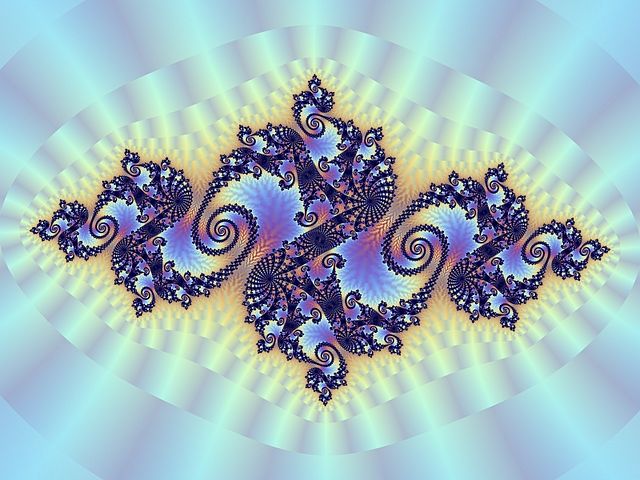An external ray is a curve that runs from infinity toward a Julia or Mandelbrot set.
Although this curve is only rarely a half-line (ray) it is called a ray because it is an image of a ray.
External rays for angles of the form : n / ( 21 - 1) (0/1; 1/1) landing on the point c= 1/4, which is cusp of main cardioid ( period 1 component)
External rays for angles of the form : n / ( 22 - 1) (1/3, 2/3) landing on the point c= - 3/4, which is root point of period 2 component
External rays for angles of the form : n / ( 23 - 1) (1/7,2/7) (3/7,4/7) landing on the point c= -1.75 = -7/4 (5/7,6/7) landing on the root points of period 3 components.
External rays for angles of form : n / ( 24 - 1) (1/15,2/15) (3/15, 4/15) (6/15, 9/15) landing on the root point c= -5/4 (7/15, 8/15) (11/15,12/15) (13/15, 14/15) landing on the root points of period 4 components.
In the context of complex dynamics, a branch of mathematics, the Julia set and the Fatou set are two complementary sets defined from a function. Informally, the Fatou set of the function consists of values with the property that all nearby values behave similarly under repeated iteration of the function, and the Julia set consists of values such that an arbitrarily small perturbation can cause drastic changes in the sequence of iterated function values.
Thus the behavior of the function on the Fatou set is "regular", while on the Julia set its behavior is "chaotic".
The equipotential lines for iteration towards infinity
Three-dimensional rendering of Julia set using distance estimation
Image: Juliasetsdkfieldlines 1
Image: Juliasetsdkfieldlines 4








